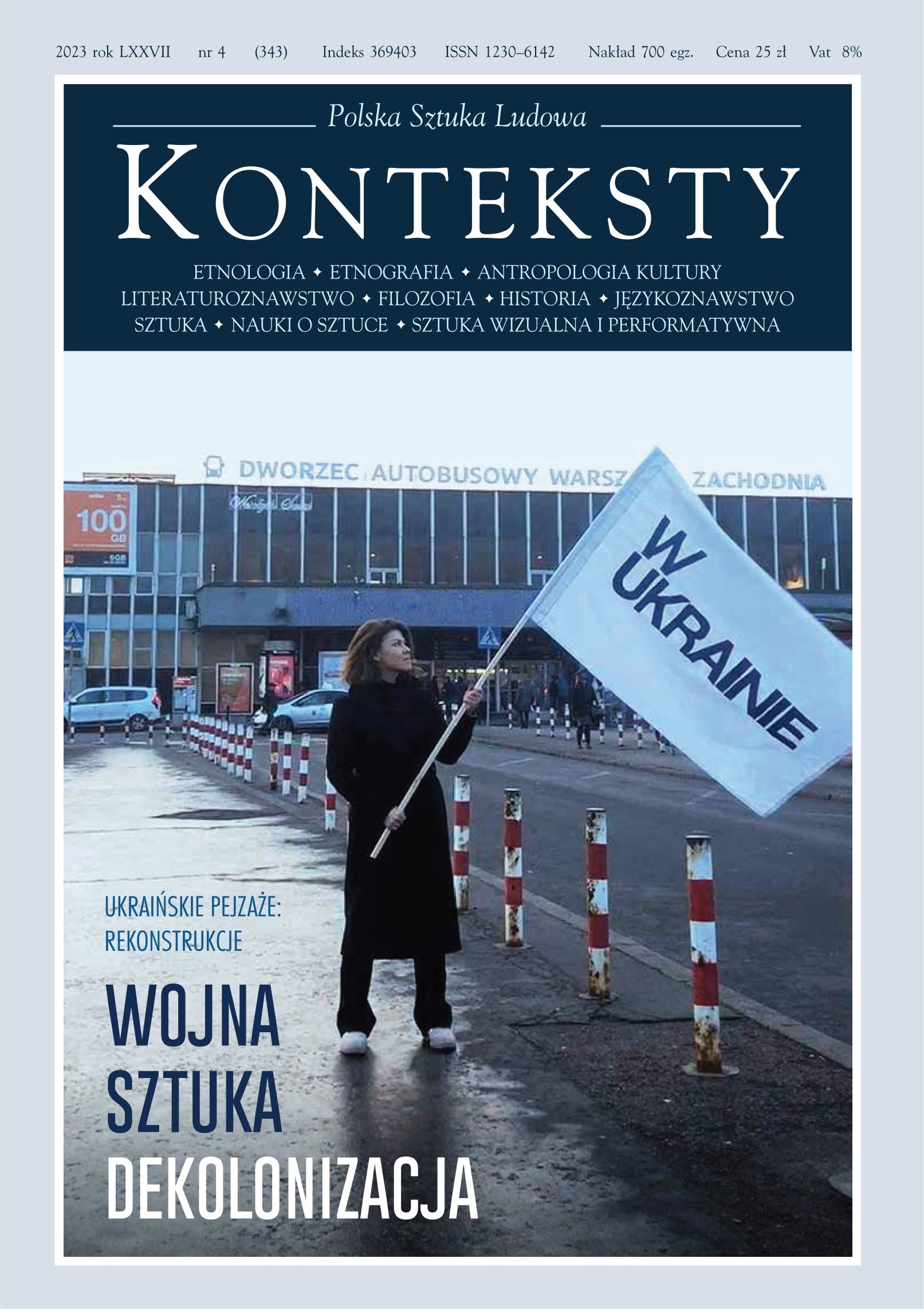Body, Subject, and Biomedia Interactions
Piotr Celiński
piotr.celinski@umcs.plMaria Curie-Sklodowska University (Poland)
https://orcid.org/0000-0003-4227-7473
Abstract
Media are becoming increasingly close to bodies, and subjects, with the assistance of their bodies and senses, increasingly interactively and tacitly converse with the world with the assistance of media close to bodies. Also in this domain of links and relations two strategies of interactivity constitutive for digital media and the “revolution” inspired with their help: download and upload, clash. I would like to take a closer look at such relations by referring to the evolution of media technologies, their interfaces and usage protocols as well as communication practices that regulate our cultural positions of media closeness and tactility. In doing so I shall make use of examples of media interacting with the skin and of interface practices realised with the assistance of Tik-Tok, seeking within them a materialisation of the strategy of mediation and tactility, cognitive distance and material proximity. I am convinced that the solidification of media strategies realised in this manner involves testing and stabilising ground for experiences up to now evading dominating rules of the media and communication game. We enter biomedia formats and, together with them, post-communication processes.
Keywords:
biomedia, body, interactions, communication, interfaceReferences
Goodhart D., The Road to Somewhere: The New Tribes Shaping British Politics, Londyn 2023.
Google Scholar
Heitmayer M., Lahlou S., Why are smartphones disruptive? An empirical study of smartphone use inreal-life contexts. “Computers in Human Behavior” 116 (2021), 106637. DOI: 10.1016/j.chb.2020.106637 (dostęp 06.2024).
DOI: https://doi.org/10.1016/j.chb.2020.106637
Google Scholar
Homepage - Quantified Self (dostęp 06.2024).
Google Scholar
Hong W., Lee J., Lee W. G., A Size-Cuttable, Skin-Interactive Wearable Sensor for Digital Deciphering of Epidermis Wavy Deformation, “Biosensors” 2022; 12(8):580. DOI: 10.3390/bios12080580 (dostęp 06.2024).
DOI: https://doi.org/10.3390/bios12080580
Google Scholar
Hudzik J. P., Z genealogii medialności, Toruń 2024.
Google Scholar
Katalog kompetencji medialnych, informacyjnych i cyfrowych :: Edukacja medialna (dostęp 06.2024).
Google Scholar
Lenz S., Weibel P., Vercellone F., Interview with Peter Weibel. Between near and far sensing, Goethe Institut 2017. Online: Interview with Peter Weibel - Goethe-Institut USA (dostęp 06.2024).
Google Scholar
Liu R., The psychology of why social media is so addictive, “UX Design” Sept. 21, 2020. Online: uxdesign.cc/the-psychology-of-why-social-media-is-so-addictive-67830266657d (dostęp 06.2024).
Google Scholar
Merleau-Ponty M., Fenomenologia percepcji, Warszawa 2001.
Google Scholar
Mrówka K., Ciało własne w filozofii Maine de Birana, Kwartalnik Filozoficzny, XXX, nr 4, 2002, s. 59–72.
Google Scholar
Neuralink — Pioneering Brain Computer Interfaces (dostęp 06.2024).
Google Scholar
Rao S., What are Connected Medical Devices?, CK Birla Group OCT 19, 2021. Online: www.birlasoft.com/articles/complete-guide-connected-medical-devices (dostęp 06.2024).
Google Scholar
Samsung Galaxy S 4 reklamowany jako „life companion”, Wirtualne media 2013-04-30. Online: www.wirtualnemedia.pl/artykul/samsung-galaxy-s-4-reklamowany-jako-life-companion (dostęp 06.2024).
Google Scholar
Wang C., et al., Bioadhesive ultrasound for long-term continuous imaging of diverse organs. Science 377, 2022, s. 517-523. DOI: 10.1126/science.abo2542 (dostęp 06.2024).
DOI: https://doi.org/10.1126/science.abo2542
Google Scholar
Wiatr P., W cieniu posthistorii. Wprowadzenie do filozofii Viléma Flussera, Toruń 2018.
DOI: https://doi.org/10.12775/978-83-231-5721-2
Google Scholar
Authors
Piotr Celińskipiotr.celinski@umcs.pl
Maria Curie-Sklodowska University Poland
https://orcid.org/0000-0003-4227-7473
PhD, Assistant Professor at the Department Media Theory in Political Science and Journalism Division at Maria Curie-Sklodowska University. Digital media theorist and author, culture animator and curator. Author, publisher and editor of Interfejsy. Cyfrowe technologie w komunikowaniu [Interfaces. Digital Technologies in Communication] (2010), Kulturowe kody technologii cyfrowych [Cultural Codes of Digital Technologies] (2011), Mindware. Technologie dialogu [Mindware: The Technologies of Dialogue] (2012), Postmedia. Cyfrowy kod i bazy danych [Postmedia. Digital Code and Data Bases] (2013). Co-founder and board member of the Digital Culture Institute Foundation (www.kulturacyfrowa.org).
Statistics
Abstract views: 190PDF downloads: 89
License
Copyright (c) 2025 Piotr Celiński

This work is licensed under a Creative Commons Attribution 4.0 International License.







